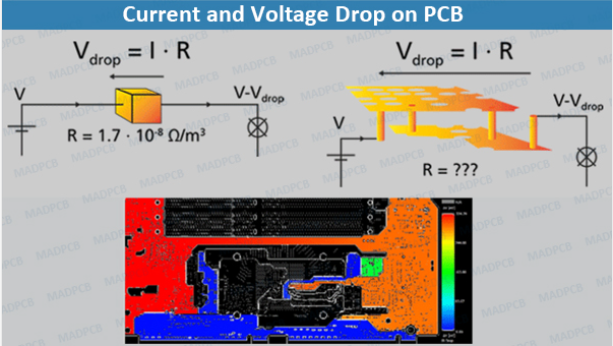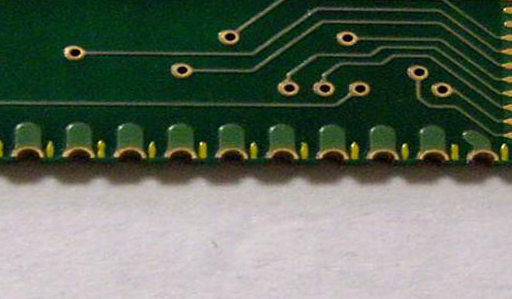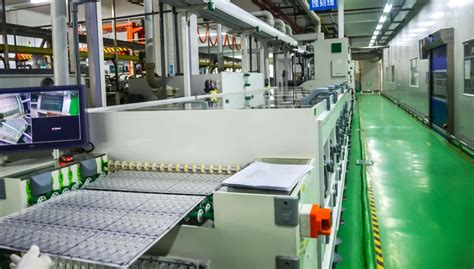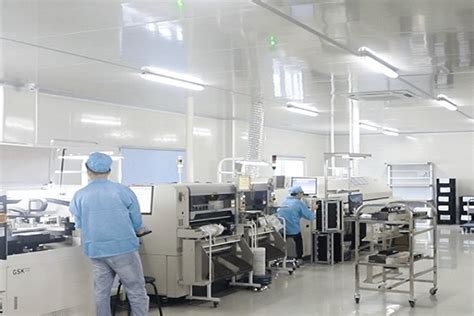Precision SMT Assembly Solutions for Automated Manufacturing
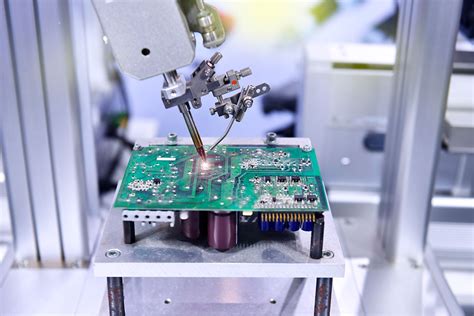
Key Takeaways
Modern PCB assembly workflows demand precision and scalability, particularly in automated manufacturing environments The integration of SMT assembly equipment enables micron-level accuracy in component placement, with advanced systems achieving placement speeds exceeding 50,000 components per hour For PCBA (Printed Circuit Board Assembly) workflows, high-speed solder paste inspection and real-time thermal profiling ensure consistent quality across high-mix production lines
Tip: When selecting SMT placement systems, prioritize machines with adaptive vision algorithms to handle irregularly shaped components and reduce misalignment errors in PCB assembly processes
A critical advantage of next-generation SMT equipment lies in its interoperability with Industry 40 frameworks For example, closed-loop feedback mechanisms automatically adjust pick-and-place trajectories based on PCBA design files, minimizing manual recalibration This seamless integration reduces downtime by 18–22% in electronics production environments, according to recent industry benchmarks
Key innovations include:
- Modular feeder systems enabling rapid changeovers for high-variability PCBA orders
- Laser-assisted soldering for heat-sensitive components in compact PCB assemblies
- AI-driven defect detection achieving 9998% classification accuracy in inline inspections
For manufacturers aiming to optimize SMT integration strategies, balancing throughput and flexibility remains paramount Hybrid configurations combining dual-lane conveyors with automatic nozzle changers have proven effective for mixed-volume PCBA production, reducing cycle times by up to 34% compared to single-lane setups
Suggestion: Implement predictive maintenance protocols for SMT machinery by analyzing motor vibration and pneumatic pressure data, extending mean time between failures (MTBF) by 40–60%
As electronics production lines adopt more heterogeneous component libraries, the role of cutting-edge SMT technology in ensuring first-pass yield becomes indispensable Systems featuring multi-stage verification workflows now address challenges like micro-BGA placements and 01005 passive alignments, critical for next-gen PCB assembly requirements
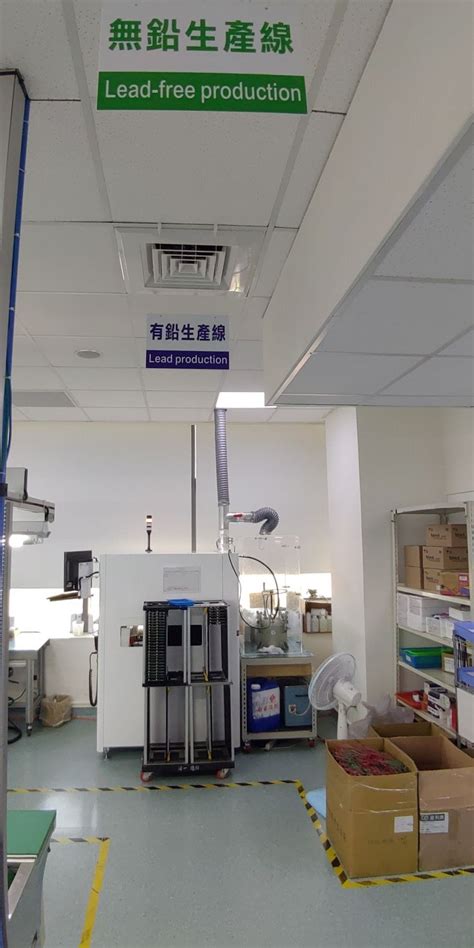
Precision SMT Equipment for Automated Factories
Modern manufacturing demands PCB assembly processes that combine speed with micron-level accuracy Precision SMT equipment forms the backbone of automated factories, enabling high-speed component integration while maintaining tolerances as tight as ±25µm These systems integrate advanced vision alignment, multi-axis robotics, and real-time thermal profiling to ensure consistent PCBA outcomes across production batches
Central to this ecosystem are pick-and-place machines capable of mounting 50,000+ components per hour, paired with intelligent reflow ovens that adapt heating curves dynamically For example, dual-lane conveyor systems in SMT assembly lines reduce idle time by 40%, allowing simultaneous processing of two PCB panels
| Feature | Manual Assembly | Automated SMT |
|---|---|---|
| Placement Speed | 200–500 CPH | 25,000–60,000 CPH |
| Accuracy Range | ±100µm | ±15–30µm |
| Defect Rate | 3–5% | 01% |
| Scalability | Low | High-volume optimized |
The shift toward Industry 40-ready SMT equipment enables seamless integration with factory-wide MES platforms This connectivity supports predictive maintenance algorithms that reduce downtime by analyzing motor vibrations and nozzle wear patterns For PCBA workflows, closed-loop feedback systems automatically adjust stencil pressure or solder paste volume when detecting pad size variations
By prioritizing precision SMT solutions, manufacturers achieve sub-100ppm defect rates even in complex designs with 01005 components or micro-BGA packages This technological edge ensures automated factories remain competitive in markets requiring rapid prototyping and mass customization
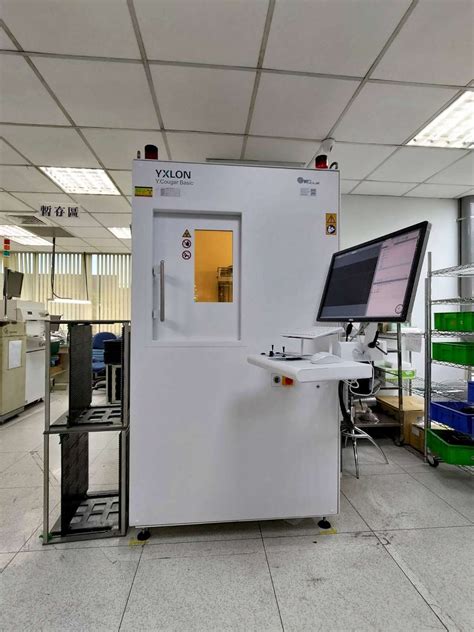
Boosting Efficiency with SMT Assembly Machinery
Modern SMT assembly equipment has become the backbone of automated manufacturing, driving unprecedented efficiency in PCB assembly workflows By integrating high-speed placement systems with intelligent process control, these machines reduce cycle times while maintaining micron-level accuracy—a critical factor for densely populated PCBA designs Central to this efficiency boost are advanced vision-guided robotics, which enable real-time component alignment corrections, minimizing rework rates by up to 40% compared to legacy systems
The latest machinery leverages self-optimizing feeder systems that automatically adjust tape tension and component pickup parameters, reducing downtime caused by misfeeds For instance, dual-lane conveyor configurations in modular SMT assembly equipment allow simultaneous processing of multiple boards, effectively doubling throughput in high-volume PCB assembly environments This is complemented by closed-loop thermal management in reflow ovens, ensuring consistent solder joint quality across varying production batches—a key advantage in mission-critical PCBA manufacturing
Data-driven analytics further amplify operational efficiency Embedded IoT sensors track machine performance metrics like nozzle wear patterns and placement deviations, enabling predictive maintenance before defects occur Manufacturers report 25-30% improvements in Overall Equipment Effectiveness (OEE) when pairing these insights with adaptive scheduling algorithms Notably, the seamless integration of stencil printers and 3D SPI (Solder Paste Inspection) systems creates a synchronized workflow, eliminating bottlenecks in multi-stage PCBA production lines
By implementing high-speed modular platforms, factories achieve flexible scalability—switching between prototype runs and mass production without recalibration delays This agility, combined with the precision of modern SMT assembly equipment, positions manufacturers to meet shrinking product lifecycles while maintaining sub-10 PPM defect rates in PCB assembly operations
Advanced SMT Placement Systems Overview
Modern PCB assembly workflows rely on precision-engineered SMT placement systems to achieve micron-level accuracy in component positioning These systems integrate adaptive vision alignment technologies, enabling real-time correction of placement deviations as small as ±15µm For PCBA manufacturers, this translates to reduced rework rates and improved first-pass yields, particularly when handling miniaturized components like 01005 resistors or 04mm-pitch BGAs
The latest systems employ multi-stage verification protocols, combining laser height sensors with 3D solder paste inspection to validate component orientation before placement This dual-layer quality control is critical in high-mix production environments where PCB assembly lines frequently switch between QFN packages and leadless devices Advanced servo-driven gantry mechanisms achieve placement speeds exceeding 45,000 components per hour (CPH) while maintaining ±25µm repeatability—a 22% efficiency gain over previous-generation machines
For PCBA applications requiring ultra-fine pitch capabilities, hybrid placement architectures combine bulk feeders for standard components with tape-on-reel systems for specialized ICs This configuration supports simultaneous processing of 72+ component types without manual intervention, effectively addressing the growing complexity of IoT and automotive electronics Thermal management subsystems maintain optimal operating conditions for sensitive components during placement, preventing warping in high-temperature PCB assembly scenarios
Integration with downstream processes is streamlined through closed-loop feedback systems that share placement data with reflow ovens and AOI stations This data-driven synchronization ensures traceability across the entire PCBA manufacturing chain, from solder paste deposition to final testing As smart factory initiatives accelerate, these systems now incorporate predictive maintenance algorithms that analyze placement head wear patterns, reducing unplanned downtime by up to 40% compared to conventional maintenance schedules
The evolution of SMT placement systems continues to redefine performance benchmarks in electronics manufacturing, balancing ultra-high-speed operations with the precision demands of next-generation PCB assembly requirements
Cutting-Edge SMT Technology in Manufacturing
The evolution of surface-mount technology (SMT) is driving unprecedented precision in modern PCB assembly workflows Today’s manufacturing floors leverage AI-enhanced vision systems that achieve component placement accuracies within ±25µm, enabling error rates below 50 parts per million in PCBA production These intelligent machines utilize adaptive algorithms to dynamically adjust pick-and-place operations, compensating for variances in component sizes and board warpage during high-speed operations
A critical breakthrough lies in 3D solder paste inspection (SPI) systems integrated with real-time process feedback loops By analyzing micron-level solder deposition patterns, these systems automatically recalibrate stencil printers, reducing material waste by 18% while maintaining ±3σ process capability Concurrently, modular conveyor systems now support hybrid PCB assembly lines, seamlessly transitioning between standard SMDs and micro-sized 0201 components without throughput loss
The shift toward industrial IoT-enabled SMT equipment has transformed PCBA quality control Networked placement machines share performance data with cloud-based analytics platforms, predicting nozzle wear 72 hours before failure occurs This predictive maintenance approach slashes unplanned downtime by 37%, as demonstrated in a recent automotive electronics case study Dual-lane configurations further enhance productivity, allowing simultaneous processing of 610mm × 457mm panels while maintaining 986% overall equipment effectiveness (OEE)
For high-reliability applications, advanced nitrogen reflow environments with ±1°C zone control ensure perfect intermetallic bonding Combined with conductive epoxy dispensing systems for edge-mounted components, these innovations support PCB assembly densities exceeding 1,200 components per square inch Manufacturers adopting these technologies report 22% faster time-to-market for complex PCBA designs, cementing SMT’s role as the backbone of smart manufacturing ecosystems

Reliable High-Speed SMT Integration Processes
Modern PCB assembly workflows demand seamless integration of speed and precision to meet the rigorous requirements of automated electronics manufacturing High-speed SMT assembly equipment achieves this balance through advanced vision-guided placement systems, real-time process monitoring, and adaptive thermal management These systems ensure micron-level accuracy even at throughput rates exceeding 80,000 components per hour, minimizing defects in PCBA production while maintaining consistent solder joint quality
A critical factor in reliable integration lies in the synchronization of pick-and-place modules with downstream processes like reflow soldering By leveraging closed-loop feedback mechanisms, modern SMT lines automatically adjust conveyor speeds and nozzle pressures to accommodate variations in component sizes or PCB panel warpage This adaptability is particularly vital for mixed-technology boards combining 01005 passives with large BGAs, where thermal profiling and placement force require dynamic optimization
For electronics production lines, the shift toward modular SMT architectures enhances scalability Dual-lane conveyors and split-axis gantry systems allow parallel processing of multiple PCBA batches without compromising cycle times Additionally, integrated quality assurance tools—such as 3D solder paste inspection and automated optical alignment—reduce manual intervention, ensuring uninterrupted high-volume output
As manufacturers prioritize zero-defect manufacturing goals, the role of predictive maintenance in SMT integration grows increasingly strategic Machine learning algorithms analyze vibration patterns, nozzle wear rates, and feeder performance to preemptively schedule servicing, extending equipment uptime by up to 30% This proactive approach not only sustains throughput but also aligns with the precision demands of next-generation PCB assembly for IoT and automotive applications
SMT Solutions for Electronics Production Lines
Modern PCB assembly workflows demand seamless integration of surface-mount technology (SMT) to address the complexities of high-mix, low-volume manufacturing Advanced PCBA solutions now incorporate intelligent feeder systems with real-time component verification, reducing setup times by up to 40% while maintaining placement accuracies below 15µm These systems are particularly critical for high-density interconnect (HDI) boards, where micro-BGA and 01005 package placements require submicron precision
Central to these systems are modular SMT assembly platforms that combine high-speed chip shooters (80,000+ CPH) with flexible multi-head gantries for irregular components For example, dual-lane conveyor configurations enable simultaneous processing of two panels, effectively doubling throughput in automated electronics production environments Integrated flux dispensers and nitrogen-assisted reflow ovens further enhance first-pass yields, especially for lead-free soldering applications requiring precise thermal profiling
A key innovation lies in closed-loop quality assurance systems Machine vision-guided PCB assembly lines now employ 3D solder paste inspection (SPI) paired with AI-driven defect prediction, achieving 50 ppm error rates in live production settings This is particularly vital for PCBA involving mixed-technology boards, where through-hole and surface-mount components coexist Manufacturers leveraging these solutions report 22% faster time-to-market for IoT devices and automotive control modules
The shift toward lights-out manufacturing has further optimized material handling in SMT workflows Robotic trolley systems automatically replenish feeders based on IoT-enabled inventory tracking, while smart thermal profilers adjust oven zones in response to real-time board thickness data Such advancements ensure high-speed SMT integration processes remain adaptable to evolving Industry 40 standards without compromising on ±0025mm placement tolerances
Transitioning to the next section, these technological leaps set the stage for examining next-generation equipment features that push the boundaries of PCB assembly scalability and precision
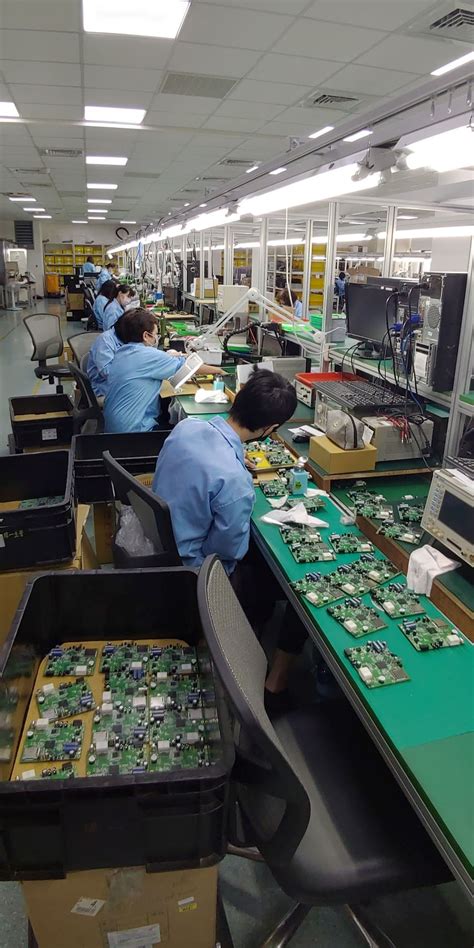
Next-Gen SMT Equipment Features Unveiled
Modern PCB assembly workflows demand equipment capable of balancing speed, precision, and adaptability The latest generation of SMT assembly machinery introduces machine learning-driven calibration systems that dynamically adjust placement accuracy in real time, reducing component misalignment by up to 40% compared to traditional models These systems integrate multi-stage thermal profiling, ensuring optimal soldering conditions for diverse PCBA substrates—from rigid boards to flexible hybrid circuits
A standout innovation is the adoption of modular architectures in placement systems, allowing manufacturers to reconfigure production lines for mixed-volume batches without downtime For instance, dual-head gantry systems now support simultaneous handling of micro-BGA components and larger connectors, achieving placement rates exceeding 85,000 components per hour This flexibility is critical for electronics production lines transitioning to high-mix, low-volume (HMLV) manufacturing models
Advanced vision systems also play a pivotal role, combining 3D solder paste inspection (SPI) with spectral analysis to detect sub-15µm defects Paired with closed-loop feedback mechanisms, these tools automatically correct process deviations, minimizing rework rates in PCB assembly workflows Additionally, next-gen machines feature energy recovery systems that repurpose waste heat from reflow ovens, cutting power consumption by 18–22%—a key sustainability milestone for automated factories
For high-speed SMT integration, manufacturers now leverage linear motor-driven conveyors that maintain ±01mm positional stability at speeds above 12m/s This ensures seamless handoffs between pick-and-place modules and downstream curing stations, critical for maintaining throughput in complex PCBA sequences Furthermore, cloud-connected diagnostic tools enable predictive maintenance, analyzing motor vibration and nozzle wear patterns to preemptively schedule servicing before failures occur
These advancements collectively address the growing demand for zero-defect manufacturing in sectors like automotive electronics and medical devices, where SMT assembly equipment must guarantee 99995% uptime while handling components as small as 01005 packages By merging precision engineering with adaptive software, next-gen systems are redefining reliability benchmarks for global electronics production lines
Optimizing SMT Component Integration Strategies
Achieving seamless PCB assembly in high-mix electronics manufacturing requires addressing multiple challenges, from component miniaturization to thermal management Modern SMT assembly equipment leverages real-time analytics to dynamically adjust placement accuracy, ensuring micron-level precision even with ultra-fine-pitch components For PCBA workflows, integrating adaptive vision systems with modular feeders enables rapid reconfiguration between product variants, reducing downtime by up to 40% in flexible production environments
A critical advancement lies in the synergy between machine learning algorithms and high-speed placement systems, which analyze historical process data to predict nozzle wear or feeder jams before they disrupt workflows This predictive capability is particularly vital for mixed-technology boards combining 01005 passives with large connectors, where inconsistent solder paste deposition can lead to tombstoning or skewed placements By embedding inline 3D SPI (Solder Paste Inspection) modules directly into SMT lines, manufacturers gain closed-loop control over stencil printing, reducing rework rates by 22–35% in automotive-grade assemblies
To further optimize material flow, leading-edge SMT machinery now employs intelligent feeder racks with RFID tagging, automatically verifying component reels against BOM revisions This integration eliminates manual checks during PCB assembly, accelerating lot changeovers while maintaining traceability for aerospace and medical applications Additionally, hybrid placement strategies—pairing ultra-high-speed chip shooters with precision gantry robots—enable balanced throughput for both standard and odd-form components within a single PCBA cycle
The strategic adoption of thermal profiling tools further refines process stability, especially for lead-free solders requiring strict temperature gradients By correlating oven zone data with post-reflow AOI (Automated Optical Inspection) results, engineers can fine-tune profiles to mitigate voiding in QFN or BGA packages Such data-driven integration not only elevates first-pass yield but also aligns with Industry 40 objectives, transforming SMT assembly equipment into interconnected nodes within smart factory ecosystems
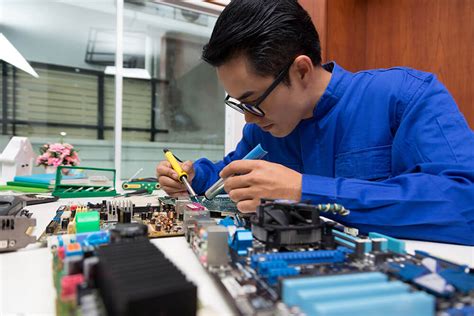
Conclusion
The evolution of SMT assembly equipment has become a cornerstone in modern electronics manufacturing, enabling unprecedented precision and scalability for automated production lines As industries demand faster turnaround times and higher component density, integrating PCB assembly processes with advanced SMT placement systems ensures seamless transitions from design to mass production These systems not only optimize high-speed integration but also minimize human intervention, reducing errors in PCBA workflows while maintaining rigorous quality standards
A critical advantage lies in the synergy between cutting-edge machinery and intelligent software, which allows real-time adjustments during electronics production For instance, vision-guided placement technologies enhance accuracy for microcomponents, while modular designs enable rapid reconfiguration of SMT assembly lines to accommodate diverse product specifications This adaptability is particularly vital for industries requiring agile responses to market shifts, such as consumer electronics or automotive sectors
Moreover, the emphasis on reliable processes ensures consistent output, even in high-volume environments By leveraging closed-loop feedback mechanisms and predictive maintenance protocols, manufacturers can achieve near-zero downtime, maximizing the ROI of SMT equipment The integration of PCB assembly stages—from solder paste application to final inspection—into a unified automated workflow further eliminates bottlenecks, fostering end-to-end efficiency
Looking ahead, the convergence of SMT technology with IoT-enabled analytics and AI-driven optimization will redefine manufacturing benchmarks Companies investing in next-gen PCBA solutions today position themselves to lead in an era where precision, speed, and adaptability are non-negotiable As automation continues to evolve, the role of SMT assembly equipment remains pivotal in transforming conceptual designs into market-ready electronics with unmatched reliability
Frequently Asked Questions
What distinguishes automated SMT systems from traditional assembly methods?
Automated SMT systems utilize PCB assembly technologies like vision-guided placement and high-speed feeders to achieve micron-level accuracy, significantly reducing human error Unlike manual processes, these systems ensure consistent throughput for PCBA production, even in complex, multi-layer designs
How does precision in SMT equipment impact electronics manufacturing?
Precision directly affects yield rates and product reliability Advanced SMT assembly equipment employs laser-aligned nozzles and dynamic thermal profiling to handle miniaturized components, ensuring optimal solder joint formation This is critical for high-density PCBA applications, where even minor misalignments can cause circuit failures
Can SMT machines adapt to mixed-component production runs?
Yes, modern PCB assembly lines feature quick-change tooling and AI-driven programming to switch between component types seamlessly This flexibility allows manufacturers to produce diverse PCBA batches without downtime, aligning with just-in-time manufacturing principles
What quality control measures are integrated into SMT workflows?
Automated optical inspection (AOI) and 3D X-ray verification are standard in advanced SMT assembly equipment These systems detect defects like tombstoning or insufficient solder, ensuring PCBA outputs meet IPC-A-610 standards before progressing to testing phases
How do high-speed SMT systems maintain accuracy at accelerated rates?
Innovations such as linear motor-driven actuators and adaptive feeder synchronization enable placement speeds exceeding 25,000 components per hour Real-time feedback loops adjust for environmental variables, maintaining precision in PCB assembly even under demanding production schedules
Explore Customized SMT Solutions for Your Production Line
For tailored PCB assembly strategies and PCBA optimization insights, please click here to consult with our engineering specialists Discover how next-gen SMT technologies can elevate your manufacturing outcomes



